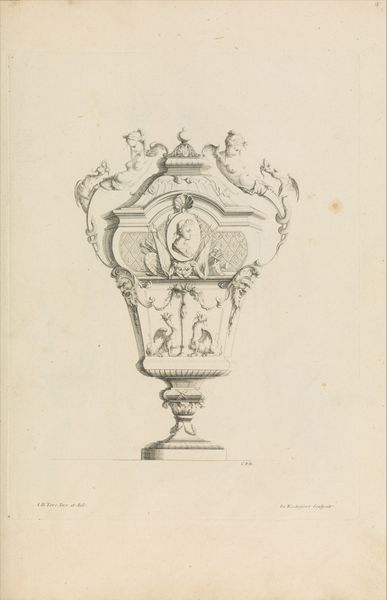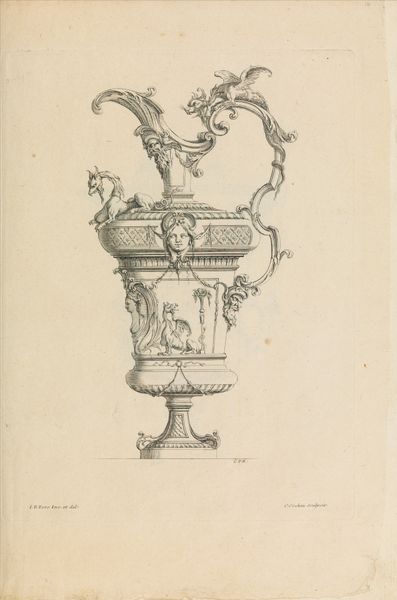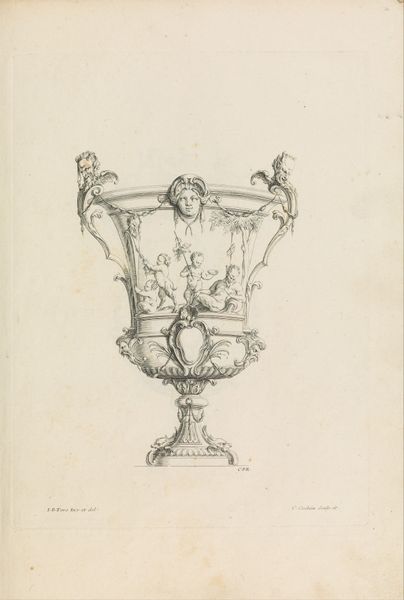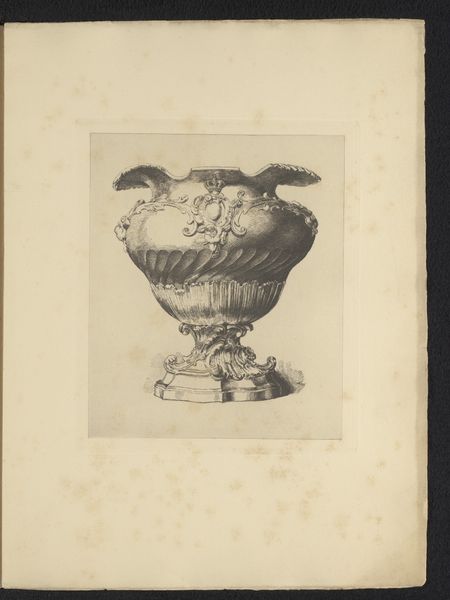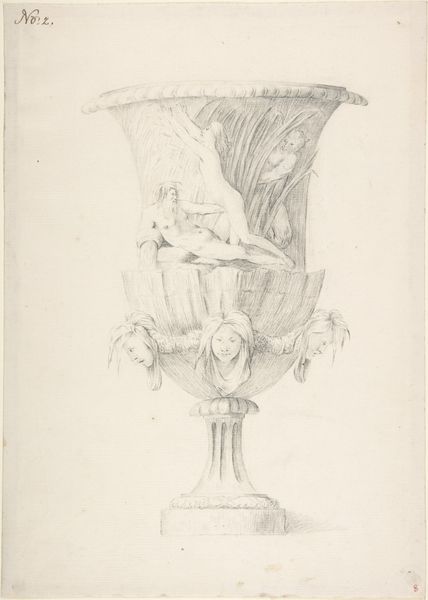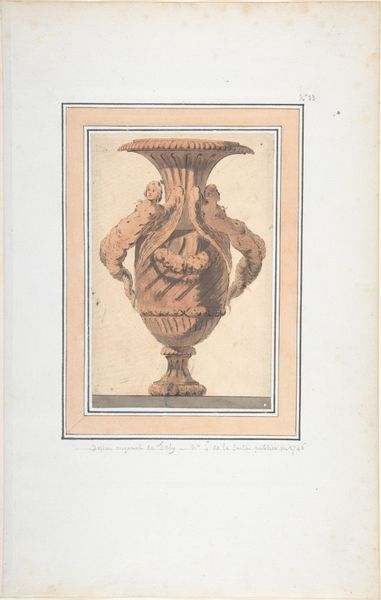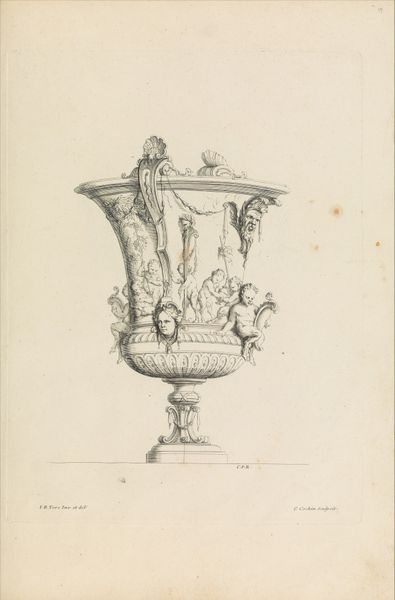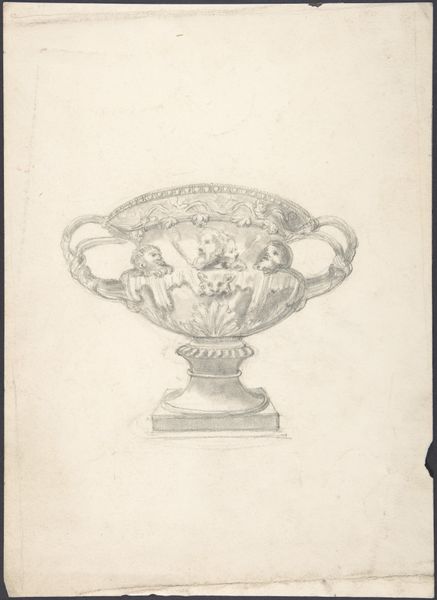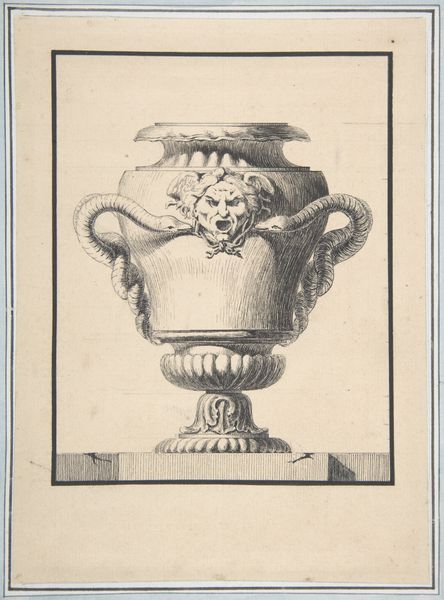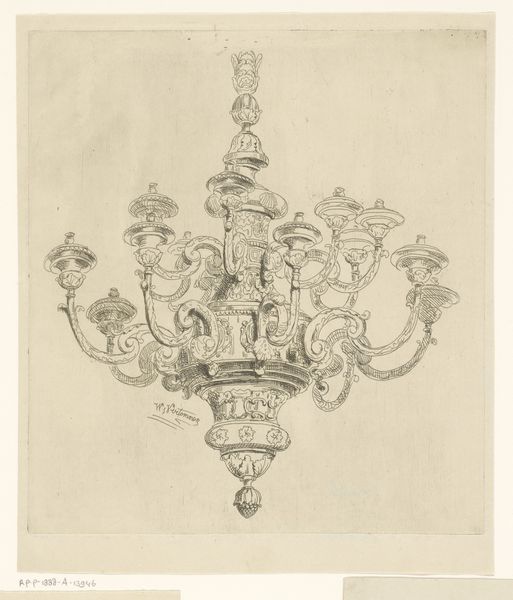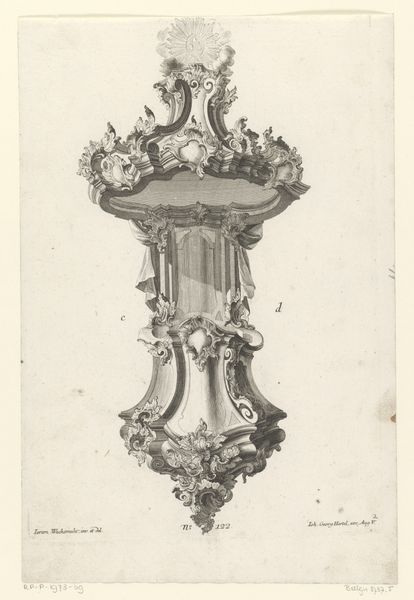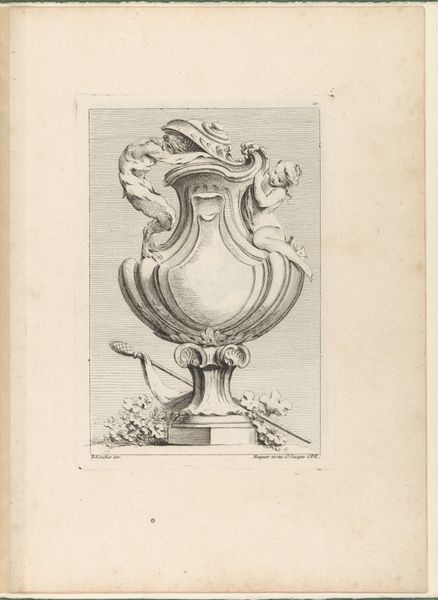
drawing, print, engraving
#
drawing
#
baroque
# print
#
vase
#
engraving
Dimensions: Plate H: 12 3/8 in. (31.4 cm); W: 9 5/16 in. (23.7 cm); Sheet H: 16 1/4 in. (41.3 cm); W: 11 1/4 in. (28.5 cm) [irregular edges]
Copyright: Public Domain
Curator: Alright, let's dive into this "Nouveau Livre de Vases," an engraving by Jean Bernard Toro, dating back to 1716. Editor: My first impression is... intense! There's just so much ornamentation. It's visually overwhelming in the best kind of way, you know? Baroque dialed up to eleven. All these faces, draperies… the chubby cherubs lounging on top feel particularly sassy. Curator: Sassy is one way to put it! Think about where something like this fits. It’s part of a pattern book—a resource for artisans, cabinet makers, silversmiths, offering models of current, fashionable taste. The Metropolitan Museum of Art has quite a collection of such books. They testify to the increasing professionalization of design and its wider dissemination. Editor: So, it's like an instruction manual for fancy-pants craftsmanship? Still, looking at it, I wonder, did anyone ever actually make a vase this elaborate? It feels almost more about the idea of opulence than practical design. That writhing snake forming the base... a little extra, no? Curator: Probably a combination of both. Actual fabrication and aspirational ideals. You're right; the vase's twisting serpent speaks to the theatrical flair and decorative complexity of the period. Images like this served as inspiration but also conveyed status, the kind of refined environment aristocratic and wealthy patrons were eager to cultivate. Plus, imagine trying to keep all those nooks and crannies clean! Editor: Oh god, the dusting. My nightmare. And the figures in what seems to be a little tableau on the body of the vase—who are those drama queens and kings, I wonder? I get the impression this print could inspire flights of fantasy, to be honest. It tickles something playful and over-the-top within. Curator: Absolutely, Toro plays on a deep well of visual association from antiquity, adding his flair, demonstrating how artists shaped courtly style while contributing to larger trends and visual vocabularies. So this sheet acts as artifact of, and instruction into, cultural history. Editor: Makes me appreciate design’s critical social role beyond just surface-level aesthetics—who has access, who controls style, whose tastes become dominant… So, in a way, looking at it makes me question all sorts of institutions. Curator: It prompts great reflection, doesn't it? How an image designed for artisans building fashionable objects might lead us down paths questioning status and class and access.
Comments
No comments
Be the first to comment and join the conversation on the ultimate creative platform.
